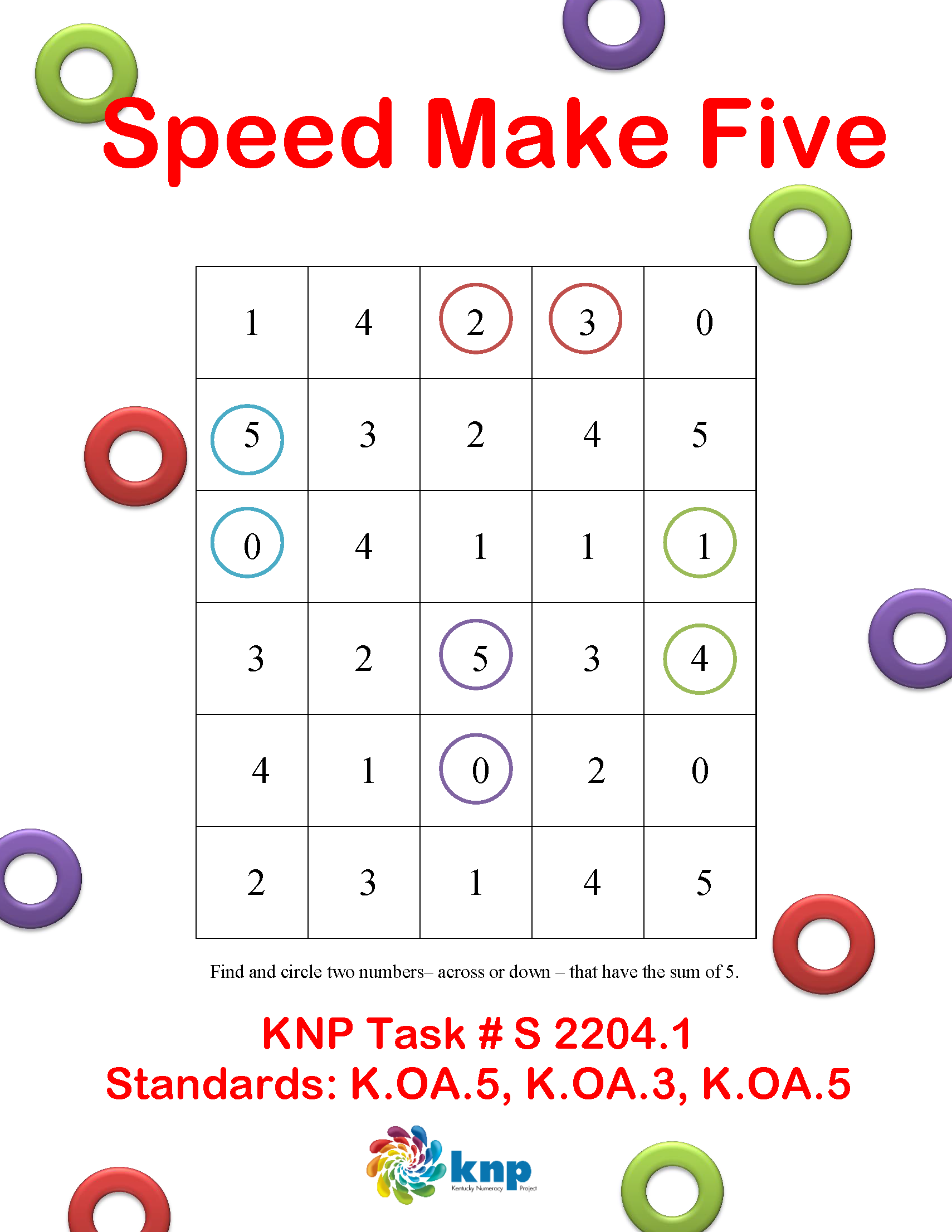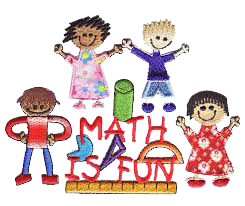"Speed Make Five"
KNPIG ID #S 2204.1
What's this activity about?
This activity is a great way for kids to learn different ways to make five with one digit numbers. There are two ways to play and both promote healthy competition. You and your child will work to find pairs of one digit numbers that add up to ten. Counting on fingers or making tally marks are good ways to learn addition and subtraction at first, but kids need to eventually develop more efficient ways to organize things in their heads. This activity encourages kids to use those new strategies so they can find pairs faster.
What materials do we need?
"Make Five" game sheet, sheet protectors, wipe off markers

How do we play?
Get the Make five board and markers. Let your child choose X or O. Count down together- 3, 2, 1, GO! Race to mark as many pairs that add to make five with either your X or O. Work until every square has been used. The winner is the player with the most squares marked.
OR- Your child can work independently to see how fast they can find all the pairs. Then they can play again to beat their time.
Where’s the Math?
There is a lot of math in this game that goes along with what kids are learning in school. Kindergarteners are practicing ways to make five. They are also learning how to look at larger numbers and break them down to smaller numbers. This game helps them develop their own mental math strategies, such as grouping, counting on, or recognizing patterns. Your child follows developmental stages when learning how to read, from the introduction of letter sounds, then how those sounds fit together to form simple words and how words fit together to form sentences before they are fluent readers. Just like learning how to read, learning how quantities relate to each other before learning the math “facts” supports developmental learning paths and will help them learn more easily as they move forward.
Things to Think About:
As you use this activity with kids, remember to BE PATIENT. Sometimes it’s hard to not help them along if they are having a hard time finding pairs. There may be a lot of guessing at first. If they continue to guess and hope they get a match, try talking about the pairs. As students find pairs they will see how putting different quantities together can still lead to the same result. This gives them a deeper understanding on how quantities work and make mastering basic addition facts easier.
You can play with your child, narrating your choices as you mark them. “I see a two. There is a one, two and a three next to it. I wonder which one I should choose to make five. What do you think?” As you progress, try to notice what strategies your child is using to figure out the pairs. Some other questions you might ask are to get them thinking are “What goes with two to make three?” or “How can you get from three to five?” Giving kids a chance to figure it out for themselves gives them a deeper understanding of what they are learning.
This may be difficult at first, but as your child practices, you will notice them building quickness and accuracy with their facts. This is an essential skill for them to master by the end of the kindergarten.
Feedback
Send us your thoughts and ideas about these activities. Email the KCM

